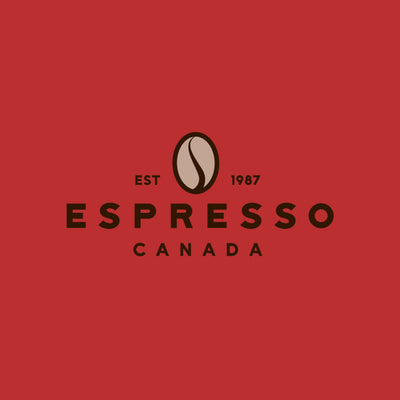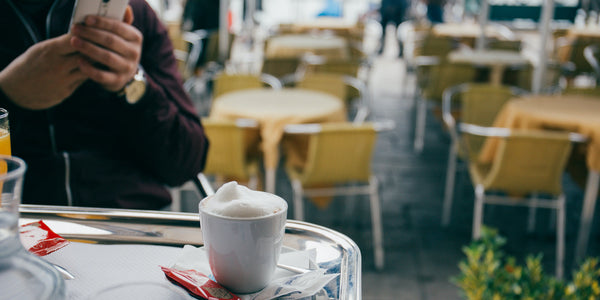Eight Things to Know About Ordering a Coffee In Italy⎮Order Coffee Like the Locals in Italy
Feb 03, 2020
When in Rome, do as the Romans do. There could hardly be a more appropriate saying as far as coffee is concerned. You're unlikely to hear two identical orders while waiting to be served at the bar in a café in Italy. The frenzy, commotion and speed with which things happen in Italian cafés is enough to make anyone's head spin let alone a tourist. However, experiencing and participating in Italian coffee culture is just as important as a visit to the Colosseum. So, before you land, be sure to take some time to understand the basics of ordering coffee in Italy so you can avoid both disappointment and embarrassment.
First: Don't Order An Espresso
If you don't want to stand out, the very first rule of thumb is not to order an "espresso". Locals don't order an espresso. Does this sound counterintuitive? After all, isn't espresso the popular coffee drink in Italy? It is indeed. Espresso is the coffee of the land so all you have to say is, "Un caffè per favore" and you will be presented with an espresso. When you talk about coffee in Italy it is presumed that you are referring to an espresso.
Download your free copy of our Espresso Drink Guide to familiarize yourself with the popular coffee drinks in Italy.
Second: Know Where to Go
Don't be put off by the signage. When you see a sign that says Bar rest assured that you can get coffee at this establishment. In Italy a bar is a full service coffee house that also serves alcoholic drinks during the"aperitivo" hours.
In Italy you will find a café every 100 metres. You may see signs that say Café, Bar, or Caffeteria (literally meaning coffee house.) While you may find one close to your hotel, take the time to explore. Even the smallest of establishments, those that appear to be just a small hole in the wall, will serve up the best tasting coffee you have ever had.

Third: Know What Time it Is
Milk based drinks like cappuccino and latté macchiato are very popular amongst Italians. But if you don't want to stick out, don't think about ordering these drinks after noon or after a meal. In fact, if you order any milk based drink after noon, you will be met with an awkward stare from the barista. According to Italians, milk based drinks are restricted to the morning because the milk will adversely affect your digestive process for the remainder of the day.
Espresso on the other hand, is meant to be enjoyed at any time. Italians will have several throughout the day including late into the evening. It is almost always ordered after a meal.
Fourth- Accept the Glass of Water
In Italy, your espresso will be served with a small glass of water. Expect the barista to ask if your prefer aqua "liscia" (flat or natural) or "frizzante or gassata" (carbonated). The intent is that you drink the water to clean you palate before you drink your coffee. With a clean palate, you are ready to fully appreciate the aroma, body and taste of your coffee.
Fifth- Think About Where You Will Drink the Coffee
Where you drink your espresso will be reflected in the price. If you go to a café and sit at a table, you will most likely be paying "il coperto", a cover charge. This amount will vary depending on the city and location of the café. You will find that most people will stand by the bar or "banco" to drink their espresso. The barista may ask where you will have the coffee as it is being made. Yes it may be busy and you will have to weave in between patrons to get to your drink, but this is normal. With all the commotion you will wonder how the barista can even remember who ordered what, but you will be pleasantly surprised at how well orchestrated this ritual is.
The idea is you are not supposed to be there for a long time, just long enough to drink your coffee and go. If you plan to linger, you plan to order a "cornetto " the famous morning pastry Italians order with their cappuccino and take in the the view, then grab a table.
Six- Know What You Can and Cannot Ask For
While you may be used to ordering an extra hot skinny grande latté at your local coffee shop in North America, know this is unheard of in Italy. If you are ordering any milk based drink they will use whole milk. The only special request you can make is lactose free milk - "latte senza lattosio" The barista will not have any almond or oat milk available and this is not acceptable in Italy,.
Also there is no ordering a specific size. The coffee drinks prepared in Italy strictly adhere to predetermined sizes based on proportions of milk to coffee. A cappuccino is about 6 ounces and no more. If you want a longer drink then order a caffé latte which is 8 ounces in total.
Finally they do not overheat the milk to make any drink extra hot. According to Italians, over steaming the milk scalds the liquid and adversely impacts the taste. The optimal temperature for a cappuccino in Italy is around 140℉.
Usually there is no take away although this is changing in some large cities to accommodate tourists and visitors. All drinks are served in porcelain cups and are intended to be enjoyed at the café.
Seven- No Need to Tip
Tipping in Italy is not expected. This is especially true if you are having your coffee standing at the bar. If you choose to take a table where a cover charge will most likely be added to your bill, patrons may leave a coin or two at most.
Eight- Know Your Coffee Options

Un "ristretto" or "café corto" pronounced ree-stray-to is simply 1 ounce of espresso with nothing added. The hazelnut crema on top, is produced by good quality espresso beans and a good espresso machine. The crema adds to the volume for a total 2 ounce drink.

A "doppio" or double pronounced do-pee-yo is two espresso drinks served in one cup for a total of 4 ounces. While a "lungo" is a long espresso with a total volume of 3 ounces. With a lungo, the barista allows more water to run through the portafilter.

A "macchiato" pronounced ma-kee-ya-to means stained in Italian. This refers to the espresso being stained with a splash of frothed milk.

A "cappuccino" pronounced cap-pu-chee-no is one third espresso, one third milk and one third foam which peaks out from the top of the cup for a total of 6 ounces. It is usually topped off with a dusting of chocolate and cinnamon topping.

A "caffé latte" pronounced ca-fay la-tay is made with a ration of 1:3 with one part espresso and three parts milk. The total volume for this drink is approximately 8 ounces. Be sure to say "caffé latte" and not just "latte". A latte in Italy is a glass of milk so that is what you will get if you leave out the word "caffé".

Un "Americano" is a double espresso topped off with hot water for a total of 8 ounces. Keep in mind the time of day you are ordering this drink because there is a popular alcoholic drink called Americano that is served during the appertivo hour (starting at approximately 5:00 pm). If you want a coffee during this time, you may want to say "un caffé Americano".

Un "caffé corretto" pronounced ca-fay core-ray-to is literally translated as a corrected coffee. The addition of liqueur corrects the coffee. This is a coffee drink enjoyed after dinner. The typical liqueur used is Sambuca an anise flavoured liqueur since the anise seed is said to help with digestion. For a stiffer coffee grappa may be added.
Coffee Specialties in Each Region
Like each region of Italy is famous for their specialty dish, many regions also have their specialty coffee drinks. In these cases, coffee drinks will incorporate spices or elements that are particular to that region. Don't be shy to ask the barista if there is a special coffee exclusive to their region. They will be happy you asked.
To recap
If you don't want to stand out like a tourist when visiting Italy, and more importantly you don't want to be disappointed with with what is presented to you, it is important you understand how to order a coffee in Italy. Additionally, you need to be aware of Italian coffee culture which is very different than North American coffee culture. This article is meant to provide you with some of the basic practices that make up coffee culture in Italy. However, we all know learning is best when immersed in that culture. So what are you waiting for, finish packing and get on that plane. Enjoy your trip and every coffee you drink.
We are sure you will be having many coffees while in Italy. In fact, we expect you may not be able to live without a daily dose of great espresso when you return. So when you come back (fair warning, it may be difficult to return), be sure to contact Espresso Canada so we can outfit you with the perfect superautomatic espresso machine that can make you a perfect Italian espresso with the push of a button.
Don't forget to download your free copy of the Espresso Drink Guide for easy reference.
Buon viaggio. Tell us where you will be going in Italy. We may have some recommendations for cafés to visit.






1 comment
Going to Florence and Rome